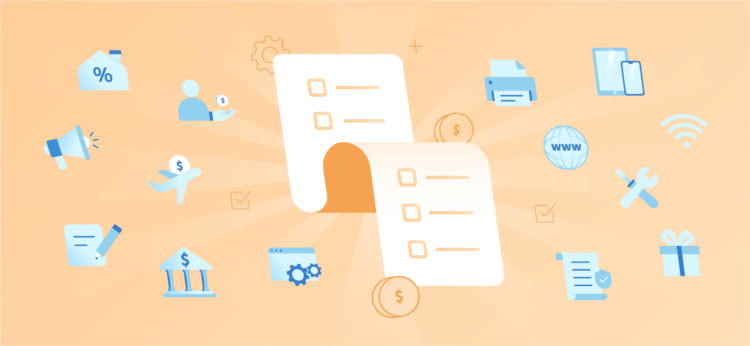Keeping track of your business expenses is important if you want to ensure that you get a tax reduction on your taxable income as well as to have a healthy cash flow.
Here’s a look at what business expenses are, which categories they fall under, and a list of the top 10 business expenses that businesses need to monitor to ensure that their expenditure is not higher than the business income.
To curb some basic bills, businesses can use a business electricity comparison online website tool to help find the cheapest energy deals to help them save on their monthly expenses.
What Are Business Expenses?
Business expenses are the expenses that are incurred at the cost of running and maintaining a company.
These expenses need to be tracked and kept a record of especially when it comes to tax purposes.
The business expenses are then subtracted from the businesses income to get to the taxable net income.
Categories of Different Business Expenses

Although they are all business expenses, each of them can be classified into different categories.
Here is a list of the common categories that you can divide your business expenses into.
1. Variable
Examples of variable expenses for a business would include credit card fees, inventory and even utilities depending on the tariff the business is on.
These are bills that have to be paid but differ in payment amounts every month.
2. Fixed
Examples of fixed expenses for a business would include expenses such as mortgages or rentals. These expenses stay the same amount each month for the length of the lease or agreement.
3. Period
These types of business expenses can be either fixed or variable and are paid in intervals instead of every month. An example of a period business expense can be insurance.
4. Depreciation
This is a fixed variable expense and is used to determine the return on investment of big assets within the company.
5. Interest
Interest expenses are tied to other expenses like period expenses.
Top 10 Business Expenses to Monitor

Here are the top business expenses that you will find in any business. Some of these expenses are added benefits for workers alongside their salaries, while others are necessary for the maintenance of the business.
1. Employee Benefits
Employee benefits include medical insurance, life insurance, disability insurance, paid time off (sick leave and holidays)
Medical insurance is covered by the business by paying a portion of the monthly premiums which insures the employee and their family medical cover such as doctor visits and prescription meds, dental and eyecare health can also be included in the medical insurance package.
Disability insurance is only offered by some companies but when they do there are usually one of two offers available and is done so to ensure the employee in case they get injured or develop a disability that results in them losing their income.
Life insurance is offered to ensure that your family is taken care of financially when you are no longer around to provide for them. These benefits are paid out to your wife/husband or children all at once after you have passed on.
Paid time off is another benefit that employers give to their workers and this comes in the form of paid sick leave, or holiday/vacation time.
2. Retirement plans
These are the pension funds that employers set aside for their workers so that they still have an income when they retire or go off work early.
A contribution is paid from the employer alongside the employee’s contribution so that each month money is paid to the retirement plan building for the employee’s future.
3. Interest expense
These are the interests that businesses need to pay when taking out a business loan to help cover the expenses of running the business or paying for some services/inventory that the business needs to keep daily operations running.
4. Taxes
These are taxes that the business needs to pay on the net income made throughout the financial year. It’s important to keep on top of these as you go along, but if you do find yourself in trouble then check out these tax relief companies to see how they can help you resolve any problems.
5. Payroll expenses
This is the amount of money that is paid out in salaries and wages to workers from the business. These payments are regarded as monthly expenses and are fixed expenses unless a bonus is added or an increase in salaries.
6. Home office expenses

These expenses are those that are needed for the business to run smoothly and for operations to take place without any hiccups, an example of these expenses is repairs done to the premises.
7. Depreciation of equipment
Over time assets lose their value and these are regarded as expenses that can be deductible by tax.
8. Insurance premiums
Usually a period expense but insurances on business equipment, premises and workers can be a great expense depending on the insurance scheme that offers a high coverage package.
9. Utilities
These can either be fixed or variable and at times both. These include your energy, gas and water bill.
Conclusion
Monitoring business expenses, which can be streamlined with the integration of Expense mileage tracking, is important for businesses to ensure that they are not spending more money on their expenses than they are making money.
By choosing cheaper options when it comes to their expenses such as their utilities or trying to curb business loans can help the business manage their expenses better.
It is important to track your business expenses so that you can know all the expenses that are needed to be paid to avoid running into arrears or having to pay extra interest rates.







